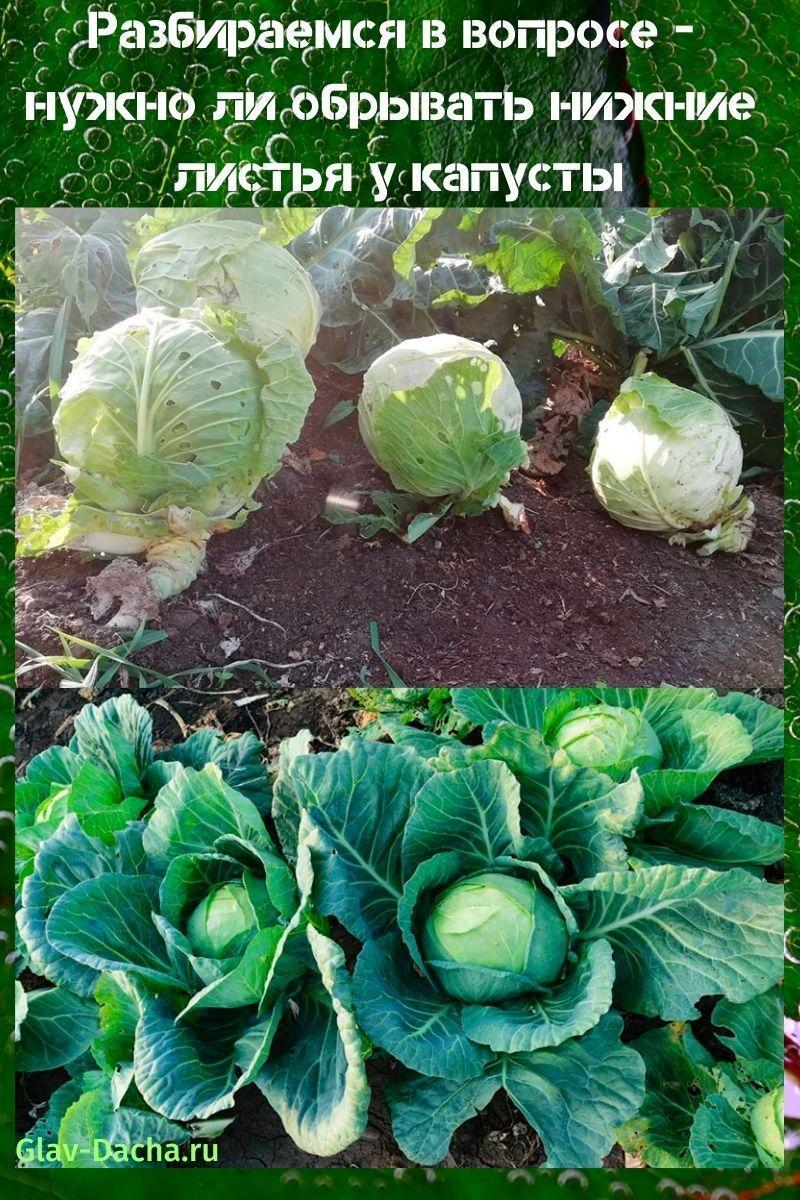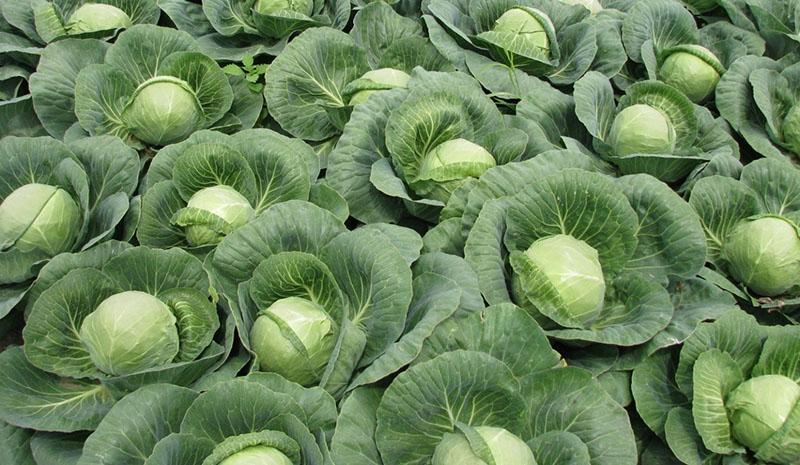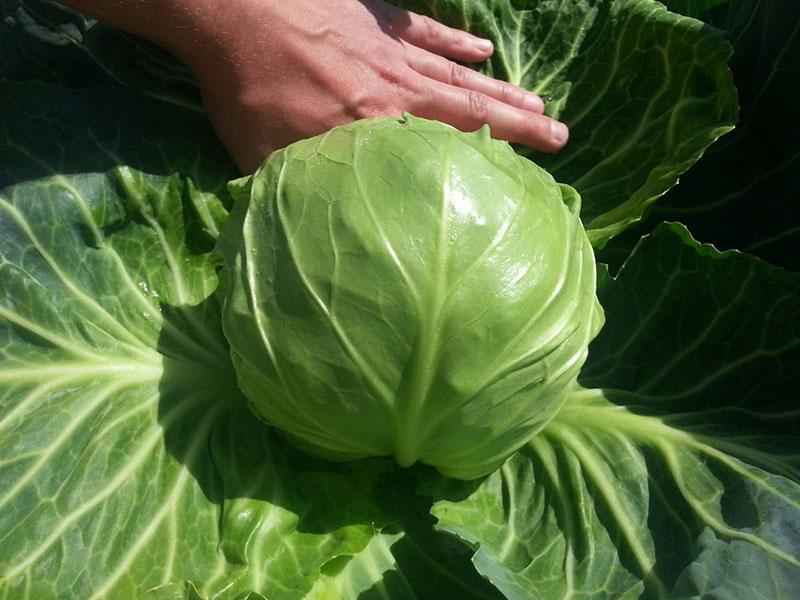We understand the question - is it necessary to pick off the lower leaves of the cabbage
 Ermoshka sits on one leg, and he has a hundred clothes on - even kids know the answer to this riddle. But adults are still wondering why the lady of the garden needs so many outfits. And is it necessary to pick off the lower leaves of the cabbage? Let's take a closer look at the cabbage wardrobe.
Ermoshka sits on one leg, and he has a hundred clothes on - even kids know the answer to this riddle. But adults are still wondering why the lady of the garden needs so many outfits. And is it necessary to pick off the lower leaves of the cabbage? Let's take a closer look at the cabbage wardrobe.
Why does a head of cabbage need lower leaves

If you cut off all the unfolded leaves of a young cabbage bush, the head formation process will be greatly slowed down. The plant will slow down development and begin to accumulate strength for the growth of new leaves. As a result, the head of cabbage will curl later than its neighbors in the garden and by the fall will not be able to grow solid sides.
 At the end of summer, such a procedure does not affect the vegetable so badly. But why do they pick off the leaves of cabbage in late summer or early autumn?
At the end of summer, such a procedure does not affect the vegetable so badly. But why do they pick off the leaves of cabbage in late summer or early autumn?
Is it necessary to pick off the lower leaves of the cabbage and in what cases it is done
 One half of the gardeners urges to remove "all unnecessary" from the pouring forks, explaining this by tradition. The other half asks a reasonable question and even sets up experiments that confirm that heads of cabbage with a full set of leaves feel no worse than their trimmed counterparts. Let's analyze specific cases.
One half of the gardeners urges to remove "all unnecessary" from the pouring forks, explaining this by tradition. The other half asks a reasonable question and even sets up experiments that confirm that heads of cabbage with a full set of leaves feel no worse than their trimmed counterparts. Let's analyze specific cases.
Old leaves with signs of disease
 Most often, the death of the lower leaf plates is caused by vascular bacteriosis. The disease is carried by wind and pests. The causative agent penetrates into plant tissues and affects the vessels. A characteristic sign of vascular bacteriosis is foliage with yellow and dry brown spots.
Most often, the death of the lower leaf plates is caused by vascular bacteriosis. The disease is carried by wind and pests. The causative agent penetrates into plant tissues and affects the vessels. A characteristic sign of vascular bacteriosis is foliage with yellow and dry brown spots.
Dead plant parts really need to be removed by burning or removing from the site. But it is impossible to defeat the disease by such measures, because the harmful bacteria has already penetrated deep into the tissues. Affected specimens are dug up, since over time the head of cabbage becomes completely inedible.
Similar symptoms are observed with other diseases - rhizoctonia, mucous bacteriosis, gray rot, fusarium, various nematodes.
Removing dead parts can reduce the number of pathogens and prevent infection of other bushes, but not cure plants.
Pest control
 A juicy vegetable is loved not only by gardeners, but also by various caterpillars, cruciferous flea, slugs. Do I need to pick off the lower leaves of the cabbage to ward off gluttonous pests from the garden? After all, the head of cabbage itself is much tastier and more tender.
A juicy vegetable is loved not only by gardeners, but also by various caterpillars, cruciferous flea, slugs. Do I need to pick off the lower leaves of the cabbage to ward off gluttonous pests from the garden? After all, the head of cabbage itself is much tastier and more tender.

This procedure will help to reduce the population of slugs, especially if you sprinkle the soil under the bushes with coarsely ground eggshells or decompose the granules of the Slime Eater.
Head cracking
 Bare forks is believed to help deal with cracking after heavy rains in the second half of summer and during the fall. This is a highly controversial point of view. Indeed, before the leaves were removed, moisture was also absorbed into them, reducing the load on the head of cabbage itself.
Bare forks is believed to help deal with cracking after heavy rains in the second half of summer and during the fall. This is a highly controversial point of view. Indeed, before the leaves were removed, moisture was also absorbed into them, reducing the load on the head of cabbage itself.
To prevent cracking, experienced gardeners are advised to partially cut the roots with a shovel or slightly rotate the bush along the axis.
This reduces the ability of the roots to absorb soil moisture.
Increased yield
 There is an opinion among some summer residents that pruning will force the plants to redirect the entire flow of nutrients to the head of cabbage, thereby increasing its weight. But numerous experiments of amateur vegetable growers suggest otherwise. Complete kale bush gains more weight than controls.
There is an opinion among some summer residents that pruning will force the plants to redirect the entire flow of nutrients to the head of cabbage, thereby increasing its weight. But numerous experiments of amateur vegetable growers suggest otherwise. Complete kale bush gains more weight than controls.
The lower leaves, not twisted into the head, perform a lot of functions necessary for the plant:
- participate in photosynthetic and metabolic processes;
- protect the soil from overheating, excessive drying or waterlogging;
- quickly evaporate excess moisture after heavy rains;
- accumulate a lot of vitamins and valuable minerals, gradually passing into the head of cabbage.
It should be noted here that the head of cabbage itself does not participate in the listed functions. Gardeners, who understand this subtlety, no longer ask themselves whether it is necessary to cut off the lower leaves of the cabbage. On the contrary, they try to keep as much green mass as possible.
Agricultural engineering errors
 Modern gardeners sin excessively by saving space and planting vegetables without taking into account the recommendations of agronomists. As a result, overgrown bushes overshadow each other and suffer from a lack of nutrition. Removing some of the leaves will help improve ventilation and reduce the likelihood of disease. But this measure does not justify itself.
Modern gardeners sin excessively by saving space and planting vegetables without taking into account the recommendations of agronomists. As a result, overgrown bushes overshadow each other and suffer from a lack of nutrition. Removing some of the leaves will help improve ventilation and reduce the likelihood of disease. But this measure does not justify itself.
It is better to grow a small number of healthy, large and normally developed forks that can be stored without problems than many small, underdeveloped specimens.
What types of cabbage do not need to remove the leaves
 Other types of cabbage - broccoli, kohlrabi, cauliflower do not need pruning. Such a procedure is generally contraindicated for the colored variety - thick "plumage" helps the fork to tie up and not darken. The exception is Brussels sprouts, which form many small heads of cabbage on the stem.
Other types of cabbage - broccoli, kohlrabi, cauliflower do not need pruning. Such a procedure is generally contraindicated for the colored variety - thick "plumage" helps the fork to tie up and not darken. The exception is Brussels sprouts, which form many small heads of cabbage on the stem.
Brussels sprouts - a rare guest in our gardens. Many summer residents refuse to grow this valuable vegetable just because they do not know the main feature.
In order for the "Brusselka" to tie numerous heads of cabbage, in the second half of summer it is necessary to pinch the top and cut off the rosette.
Then the plant will move from a vegetative type of development to a generative one, and the future harvest will get more sun and nutrients. This feature is associated with the long growing season of Brussels sprouts - over 6 months. In warmer countries, it grows without additional manipulation.
Trimming cruciferous crops should not be done rashly. It can be beneficial, but in most cases it hurts. Still don't believe it? Conduct a simple experiment, and after a year you will no longer have doubts about whether to pick leaves from cabbage.